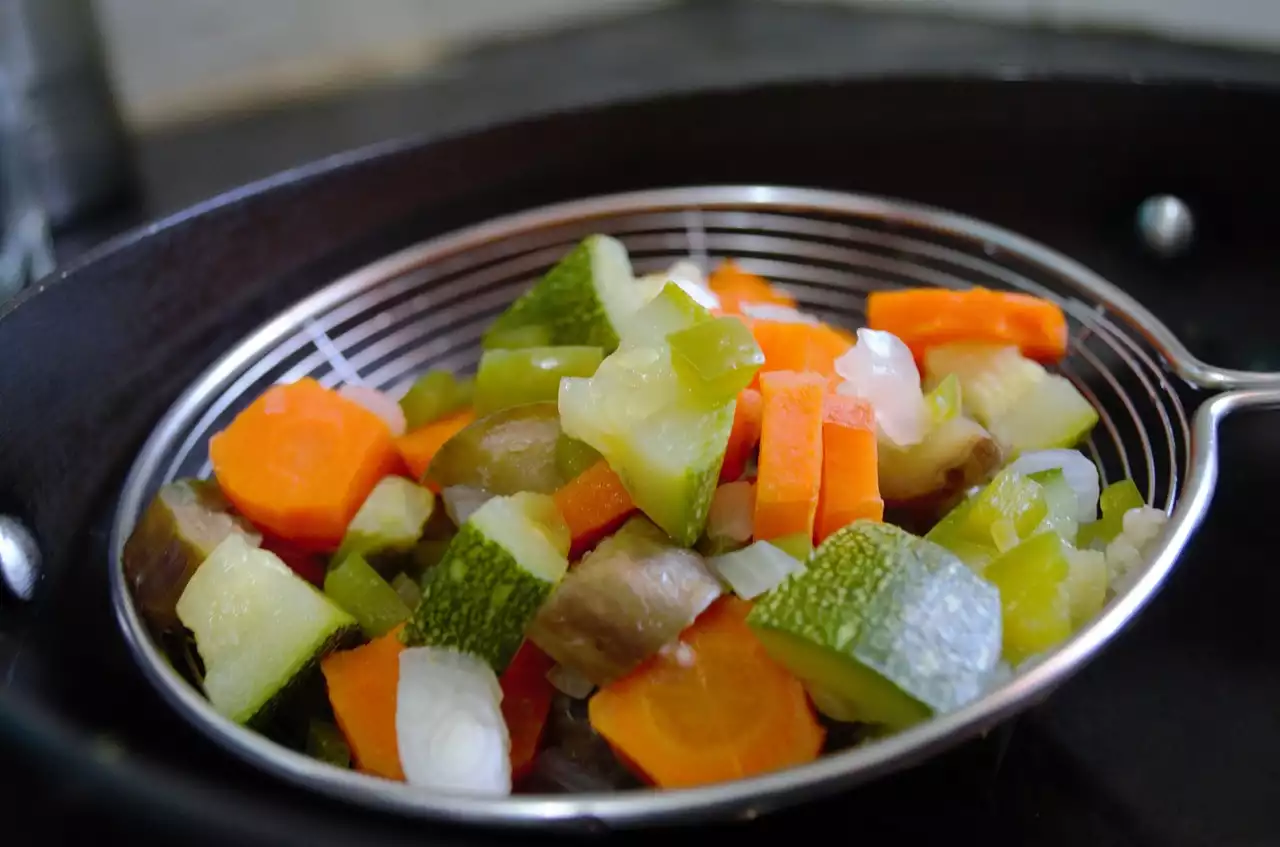Blanching is a cooking technique that involves briefly immersing food in boiling water, followed by an immediate plunge into ice water to stop the cooking process. While it's commonly used to prepare food for further cooking, blanching also offers several health benefits that can improve your diet. In this in-depth article, we'll explore the health benefits of blanching, including nutrient retention, reduction of harmful compounds, improved digestibility, and flavor enhancement. If you're looking to make your meals healthier and tastier, read on to learn more about blanching and its advantages.
Retention of Nutrients
Blanching is an excellent way to preserve the nutrients in food. By blanching vegetables, for example, you can retain their color, flavor, and texture while reducing the risk of nutrient loss. Vegetables like broccoli, carrots, and green beans are high in water-soluble vitamins and minerals that can easily leach out during cooking. However, blanching helps to preserve these nutrients by stopping the enzymes that break them down.
Additionally, blanching can help to preserve antioxidants like carotenoids and flavonoids, which are essential for maintaining good health. Antioxidants protect your body from free radicals, which can damage your cells and contribute to chronic diseases like cancer and heart disease. By blanching your vegetables, you can keep these antioxidants intact and enjoy their health benefits.
Reduction of Harmful Compounds
Blanching can also reduce harmful compounds in food. For example, blanching cruciferous vegetables like broccoli, cauliflower, and Brussels sprouts can reduce their glucosinolate content. Glucosinolates are compounds that are known to interfere with iodine uptake and thyroid function, leading to goiters and hypothyroidism. By blanching these vegetables, you can reduce their glucosinolate content and make them safer to eat.
Blanching is also effective in reducing the levels of acrylamide, a potential carcinogen, in fried or baked foods like French fries and potato chips. Acrylamide is formed when foods are cooked at high temperatures, and it can cause cancer in laboratory animals. However, blanching can reduce the levels of acrylamide in these foods by up to 90%, making them safer to eat.
Improved Digestibility
Blanching can also improve the digestibility of some foods, making it easier for your body to absorb nutrients. For example, blanching almonds before eating them can make them more digestible and easier to absorb, making them an excellent source of protein and healthy fats. Similarly, blanching kale or spinach can reduce their oxalate content, which can interfere with calcium absorption.
Oxalates are compounds found in many plant-based foods that can bind to calcium and prevent it from being absorbed by the body. This can lead to calcium deficiency and weakened bones. By blanching these vegetables, you can reduce their oxalate content and make them safer to eat.
Flavor Enhancement
Blanching can also enhance the flavor of some foods, making them more appealing and enjoyable to eat. For example, blanching tomatoes before making a sauce can help to enhance their natural sweetness and reduce their acidity, making the sauce more flavorful and balanced. Similarly, blanching green beans or asparagus can help to preserve their vibrant green color and improve their texture and flavor.
The blanching process involves immersing the food in boiling water for a short period, typically around 2-3 minutes, followed by an immediate plunge into ice water to stop the cooking process. This technique is also known as "parboiling" and is commonly used to prepare vegetables for canning or freezing.
Blanching is a simple and versatile cooking technique that can be used for a wide range of foods. It can help to preserve nutrients, reduce harmful compounds, improve digestibility, and enhance flavor. Here are some tips to help you get the most out of blanching:
- Use a large pot of boiling water to ensure that the food is evenly cooked.
- Don't overcrowd the pot, as this can lower the temperature of the water and result in uneven cooking.
- Use a timer to ensure that you don't overcook the food.
- Plunge the food immediately into ice water to stop the cooking process and preserve its color and texture.
- Drain the food well before using it in a recipe.
Blanching is a simple but effective way to make your meals healthier and tastier. Whether you're preparing vegetables for a salad, blanching nuts for a snack, or blanching tomatoes for a sauce, this cooking technique can help you to retain nutrients, reduce harmful compounds, improve digestibility, and enhance flavor.
If you're looking to improve your diet, consider incorporating blanching into your cooking routine. With its many health benefits and versatility, it's a simple but effective way to make your meals healthier and more delicious.
In conclusion, blanching is an essential cooking technique that can improve the quality and health benefits of your food. By preserving nutrients, reducing harmful compounds, improving digestibility, and enhancing flavor, blanching can help you to make healthier and tastier meals.
Incorporating blanching into your cooking routine is simple and easy. Whether you're blanching vegetables, nuts, or fruits, this technique is versatile and effective. With these benefits in mind, you can experiment with blanching and discover the many ways in which it can enhance your cooking.
In summary, blanching is a useful and healthy cooking technique that you should consider using in your kitchen. By retaining the essential nutrients in food, reducing harmful compounds, and improving digestibility and flavor, blanching can help you to make the most of the food you eat.





